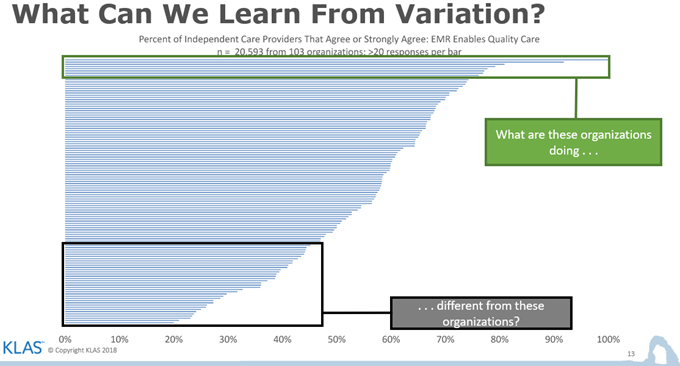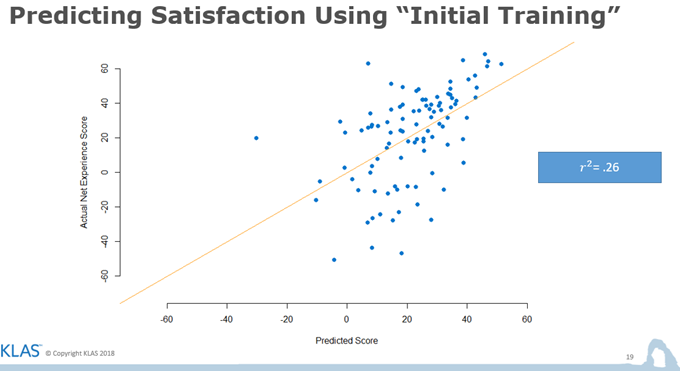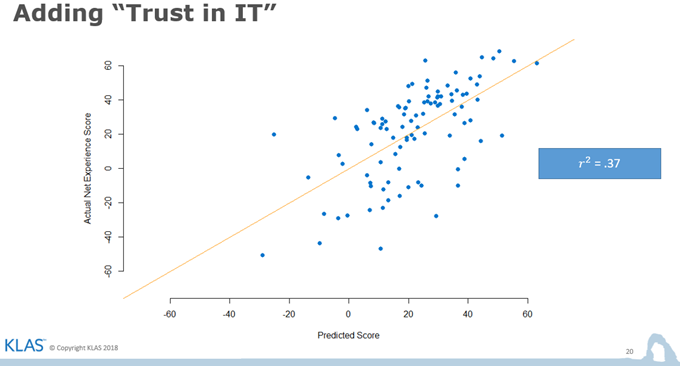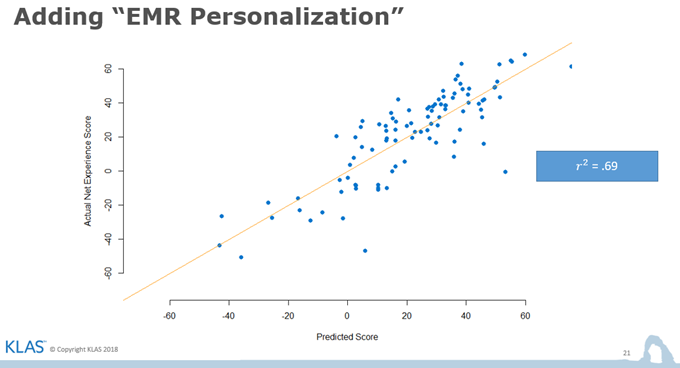
Making Sense of EHR Satisfaction
If you’re a fan of the A-Team, then I’m sure you “love when a good plan comes together.” If you’re a fan of data, then I’d wager you also love when a good dataset brings new insights.
Recently, KLAS has been diving deep on EHR usability and end-user satisfaction. With the help of over 100 amazing healthcare providers across the world, we’ve amassed quite the dataset. Our surveys, sent out to physicians and nurses, help to uncover some of the big changes that can take an EHR from second string to the A-team.
As we began compiling our data from these organizations, we sought out successes from high-satisfaction organizations and identified the effects that the changes they made have on overall satisfaction. Essentially, we asked this question:

This was where the magic of data began to take shape. As we started to overlay variables of satisfaction, we found that we could explain a large amount of the variation in satisfaction between provider organizations.
In fact, as I saw the following three charts for the first time, I was blown away by how much these three relatively minor factors could influence satisfaction.



As the data shows, just about 70% of the variance in satisfaction between organizations can be accounted for by considering training, trust in IT (or organizational culture), and the level of EHR personalization.
The best part?
The organizations participating in the Arch Collaborative come from a wide array of clinical settings and vendor deployments. This data includes the jumbo-sized acute care facilities using Epic or Cerner systems and smaller critical-access organizations running athenahealth, MEDITECH, or Allscripts solutions. These three factors accurately predict satisfaction regardless of your EHR, with rare exceptions.
So how can providers capitalize on this data? Let’s look at what KLAS has learned about each of those three areas:
Training
Clinicians have completed years of school to master the ins and outs of care delivery; indeed, they are experts at providing healthcare. That expertise, however, doesn’t always extend to the technology they use in their workflow. Newly hired physicians need more than six hours of initial training. As Taylor Davis once told me, “Healthcare is the most complex services industry in the world. It makes sense that the software enabling those services is also incredibly complicated.” These tools require in-depth training provided by people who understand the perspective of their students (peer-to-peer training has been shown to be especially effective).
Trust in IT
This aspect of EHR success can also be referred to as governance and culture. Arch Collaborative members who report high end-user satisfaction tell us that their organizations have worked hard to bridge the gap between their clinical and technical teams. This means allowing small/critical EHR optimizations to move quickly through the approval process and making sure that both sides feel heard by management.
Personalization
The level to which a clinician sets up personalizations is the best predictor of satisfaction. Specifically, the customizations that allow physicians to get data out of the EHR seem to have the deepest impact on end users’ feelings toward their system. Care should be taken to help your clinical team members understand and establish a personalized EHR experience that corresponds with their unique workflow.
At the end of the day, there isn’t a single, silver bullet for solving the technological component of clinician burnout. But for an organization looking to take an active role in making its users’ lives better, this is a good place to start.
Learn how to participate in the Arch Collaborative.